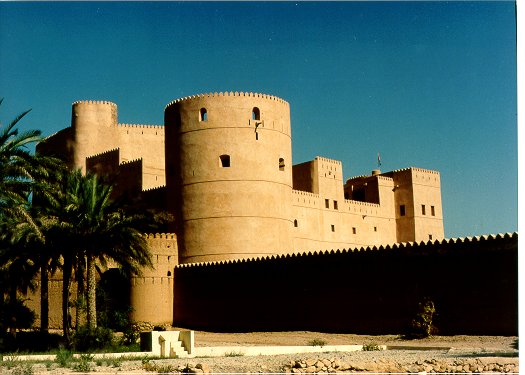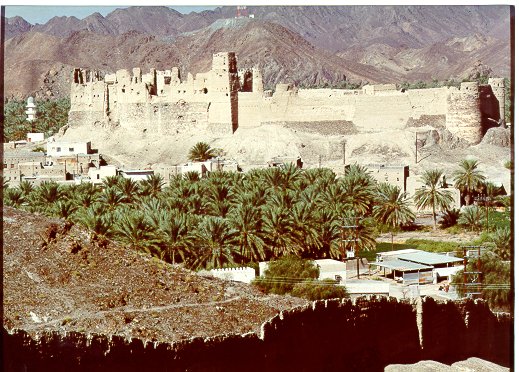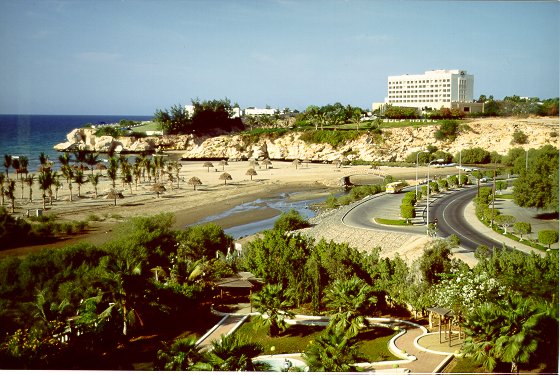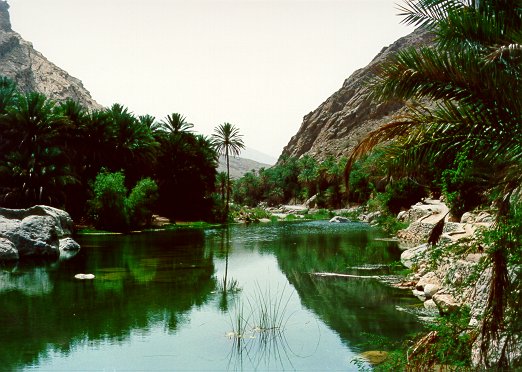The Sultanate of Oman

How to get to Oman
Aquiring Visa :
You will need to apply through the Oman Embassy or Consulate in your home country. Take your passport and four passport-size photographs per application. The visa will take 5 -10 days to process. Express visas take 24 hours to process and are valid for 14 days from the date of issue.
Business visas take 7 days to process and are valid for three months from the date of issue or one month from the date of entry.
Tourist visas take 10 days to process and are valid for one month.
Hotels, tour operators and Omani nationals can arrange visas on behalf of foreign visitors.
Airlines will not accept passengers disembarking at Muscat without a valid visa.
By Air :Some of the Airlines that comes to Oman are British Airways, KLM, Kuwait Airways, Swiss Air and Emirates. The national carrier is Oman Air which flies to the United Arab Emirates (UAE), India, Pakistan, Qatar, Egypt, and Sri Lanka as well as performing domestic flights to Salalah, Masirah Island and Musandam.
By Road : 4-5 hours of drive from Dubai (UAE) to Muscat (Oman)
Transport :Many visitors, if not hiring cars, tend to use taxis, which are reasonably priced. There are a number of metered cab firms now. Agree the price first if using an orange and white taxi. Mini-buses travel all over the commercial areas, stopping and picking-up on request. This form of transport is particularly cheap. The Oman National Transport Company is the state-run bus service which has a network of routes throughout the Sultanate. Long distance coach trips leave Ruwi bus station to the likes of Salalah for RO 16 return, making this a comfortable and cheap form of transport. The national carrier, Oman Air, flies to Salalah, Khasab and Masirah Island and is the only airline to make domestic flights within the Sultanate. Masirah Island has a regular ferry service to and from the mainland, but all other boat services are provided through tour operators.
There are no trains in Oman.
The Language used in The Sultanate of Oman primarily is Arabic and the secondary language is English.

Places of Interest
When you are at Oman be sure to visit some of these places listed below it is worth it.
Nakhl Fort (Al Batinah)
is within an hour's drive of Muscat and provides a morning of sight-seeing. The fort is 350 years old and is set in a gorge, surrounded by a mountain enclave. In 1990, sympathetic restoration work began, using traditional building materials and period furnishings. The carved master gate is believed to date back to the 1830's during the reign of Sayyid Said bin Sultan.
Nizwa Fort
(A'Dakhliyah) was completed in 1668 and guards the route through the Sumail Gap to the Interior regions. The fort was once used as the Imam's headquarters and is a stronghold designed to withstand some of the most aggressive sieges. The traditional doors are inches deep and over the lintel of each is a hole through which boiling oil could be poured over the marauding enemies.
Rustaq Fort, (Al Batinah)
originally known as Qalat Al Kisra, was built in the 13th century. It has four towers: Al Burj Al Ahmar; Al Burj Al Hadeeth; Al Burj Al Reeh; and Al Burj Ashiateen (which means, ominously, the devil's tower). A falaj ran through the fort to supply water to its inhabitants. Should this become contaminated, the inhabitants were able to rely on a well. There are many rooms to this fort and it also boasts a mosque, weapons' room, prison, and reception area.
Jibreen Fort
was built by Bil'arab bin Sultan, an Imam of the Ya'aruba dynasty during the 17th century. It is one of the most impressive forts in the Sultanate and the details and carvings in the rooms and balconies are most elaborate. Finely painted flowers and symbols are found on the ceilings in the 'living' rooms. The tomb of Imam Bil'arab remains within the fort.
Bahla Fort
is one of the oldest remaining forts in Oman and has been listed by UNESCO as a World Heritage Site. Renovation started in 1995 under the Ministry of Heritage and Culture. It has a city wall of 12km and 132 watchtowers with guardrooms.
Beaches
 With a coastline of 1700km, Oman offers some of the cleanest, most stunning beaches a visitor could hope to see. Few beaches are private, except some attached to the beach resort hotels, or those adjoining military or official property. Weekend picnics and barbeques are popular on the beach. Many coves are perfect for snorkelling and with fairly gentle shelves, are good for children. Some of the beaches in the Muscat capital area include:
Aviation Beach, or Shell Beach, which is located near the Civil Aviation Club in Al Azaiba. A four-wheel drive vehicle is necessary to get down to the water's edge. It is abundant in starfish, crabs and exotic shells.
Qurum Beach, below the Crowne Plaza Hotel, is well set up for visitors and has a number of picnic areas and palm shades. When the tide is low, one can take a 4km walk towards the Embassies' area in Shati Al Qurum. Approximately half way along this stretch of beach is the Muscat InterContinental hotel. Around this area are many jetski rentals.
Bandar Jissah is located near Qantab, on the way to Al Bustan. The bay is quite secluded and the rocks at the foot of the cliffs can be good for exploring when the tide is out. Snorkelling is popular here. There is also a children's playground and snack shop.
Marjan Beach, near Petroleum Development Oman (PDO), is quiet during the day, but tends to get livelier in the early evenings. It has some small coral reefs, perfect for the novice snorkeller, as one doesn't have to swim too far out before seeing the likes of clown fish, parrot fish, sea cucumbers and occasionally, turtles and rays. Local fishermen can be seen spearing cuttlefish. With a coastline of 1700km, Oman offers some of the cleanest, most stunning beaches a visitor could hope to see. Few beaches are private, except some attached to the beach resort hotels, or those adjoining military or official property. Weekend picnics and barbeques are popular on the beach. Many coves are perfect for snorkelling and with fairly gentle shelves, are good for children. Some of the beaches in the Muscat capital area include:
Aviation Beach, or Shell Beach, which is located near the Civil Aviation Club in Al Azaiba. A four-wheel drive vehicle is necessary to get down to the water's edge. It is abundant in starfish, crabs and exotic shells.
Qurum Beach, below the Crowne Plaza Hotel, is well set up for visitors and has a number of picnic areas and palm shades. When the tide is low, one can take a 4km walk towards the Embassies' area in Shati Al Qurum. Approximately half way along this stretch of beach is the Muscat InterContinental hotel. Around this area are many jetski rentals.
Bandar Jissah is located near Qantab, on the way to Al Bustan. The bay is quite secluded and the rocks at the foot of the cliffs can be good for exploring when the tide is out. Snorkelling is popular here. There is also a children's playground and snack shop.
Marjan Beach, near Petroleum Development Oman (PDO), is quiet during the day, but tends to get livelier in the early evenings. It has some small coral reefs, perfect for the novice snorkeller, as one doesn't have to swim too far out before seeing the likes of clown fish, parrot fish, sea cucumbers and occasionally, turtles and rays. Local fishermen can be seen spearing cuttlefish.
 Wadis A wadi is a dried up riverbed found in the mountain valleys. Wadis come into their own after heavy rains, when the rivers start running again and the vegetation is restored. However, some wadis have year-round running water, with deep, cool pools in which it is quite safe to swim if the currents are slow. On the whole, wadis are only accessible with a four-wheel drive vehicle, as the terrain can be extremely bumpy. Wadis are green, lush oases of palm trees, grasses, and flowering shrubs. The villagers often take their cars down for washing and groups of people have great fun splashing around in the clean water. It is always safest to visit wadis in a group or with a tour guide. Although they are beautiful places, they are often remote and car breakdowns can happen to anyone. Visitors must also be on the alert for rain clouds, as sudden downpours can lead to flash floods, which are highly dangerous when in the gorges. Wadis A wadi is a dried up riverbed found in the mountain valleys. Wadis come into their own after heavy rains, when the rivers start running again and the vegetation is restored. However, some wadis have year-round running water, with deep, cool pools in which it is quite safe to swim if the currents are slow. On the whole, wadis are only accessible with a four-wheel drive vehicle, as the terrain can be extremely bumpy. Wadis are green, lush oases of palm trees, grasses, and flowering shrubs. The villagers often take their cars down for washing and groups of people have great fun splashing around in the clean water. It is always safest to visit wadis in a group or with a tour guide. Although they are beautiful places, they are often remote and car breakdowns can happen to anyone. Visitors must also be on the alert for rain clouds, as sudden downpours can lead to flash floods, which are highly dangerous when in the gorges.
 Gardens and Parks For what is typically considered a 'desert country', Oman astounds the visitor with its verdant gardens, and elaborate floral displays lining the highways and byways. All the parks are free to enter and usually have small snack shops or drinks stands. Some parks, in or near to Muscat district are as follows:
Qurum Natural Park was opened in 1993 and is 570,000m2, the largest park in Muscat. The park contains a large boating lake and fountain, 'Waterfall Hill', Sultan Qaboos' Rose Garden and meandering pathways, weaving amongst pungent-smelling shrubs and floral beds.
Past Seeb International Airport, heading towards Sohar, just off the highway, is Naseem Park which has, amongst many other features, an Arabic garden, Japanese garden, mini falaj system and a small train capable of holding 70 passengers which circumnavigates the park.
Riyam Park, on Muttrah Corniche, is a favourite park with children. It is a huge, rambling place whose main feature is an enormous incense burner which, when climbed, provides stunning views of the nearby harbour and surrounding seacliffs. A static fairground is open from 4pm each day providing thrills and spills for the young and the young-at-heart.
Khalbuh Park is located a little further along the Corniche from Riyam Park. It has a small, children's play area and an amphitheatre for concerts by local artists and bands. Gardens and Parks For what is typically considered a 'desert country', Oman astounds the visitor with its verdant gardens, and elaborate floral displays lining the highways and byways. All the parks are free to enter and usually have small snack shops or drinks stands. Some parks, in or near to Muscat district are as follows:
Qurum Natural Park was opened in 1993 and is 570,000m2, the largest park in Muscat. The park contains a large boating lake and fountain, 'Waterfall Hill', Sultan Qaboos' Rose Garden and meandering pathways, weaving amongst pungent-smelling shrubs and floral beds.
Past Seeb International Airport, heading towards Sohar, just off the highway, is Naseem Park which has, amongst many other features, an Arabic garden, Japanese garden, mini falaj system and a small train capable of holding 70 passengers which circumnavigates the park.
Riyam Park, on Muttrah Corniche, is a favourite park with children. It is a huge, rambling place whose main feature is an enormous incense burner which, when climbed, provides stunning views of the nearby harbour and surrounding seacliffs. A static fairground is open from 4pm each day providing thrills and spills for the young and the young-at-heart.
Khalbuh Park is located a little further along the Corniche from Riyam Park. It has a small, children's play area and an amphitheatre for concerts by local artists and bands.
|
|
